Civic Engagement
Co-Teaching & Community Engagement is a part of
Civic Engagement at Chico State.
Co-teaching at Chico State and across the country takes many forms. In our Spring 2018 Faculty Learning Community, we put together diagrams of the various shapes this may take, including: linked courses, informally blended courses, formally blended courses and merged courses.
Co-Teaching Models: Possible Course Configurations (PDF)
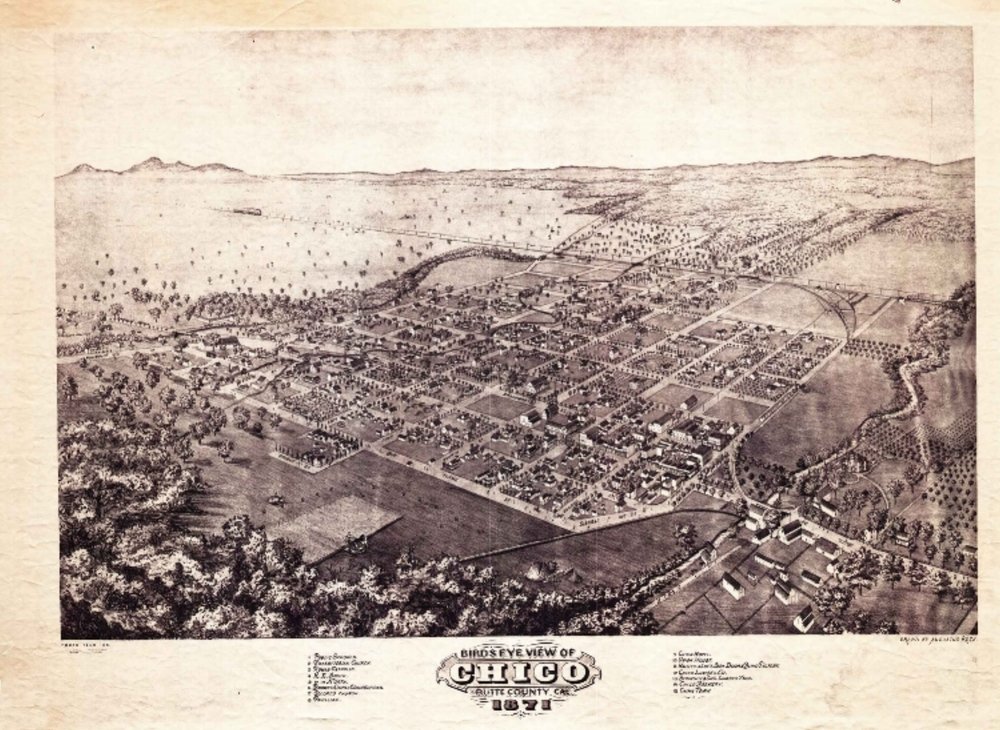
The South Campus Neighborhood Project is an award-winning neighborhood improvement planning effort coordinated by the Resilient Cities Initiative at California State University, Chico and the Public Works-Engineering Division at the City of Chico, CA. The project is focused on the public rights-of-way in Chico, California’s South Campus Neighborhood.
Immediately adjacent to both downtown Chico and the University, it is Chico’s oldest residential neighborhood and was laid out by the town’s founder, John Bidwell, in the 1860’s. About the project, President Hutchinson says, “Chico State strives to be an engaged and collaborative neighbor; the South Campus Neighborhood Project has taken our relationship with the City of Chico to a new level.
This project gives students the chance to leave their mark on our city in an exceptional manner, shaping its future for the better, and impacting generations of students and citizens for decades to come.”
Over the past three years, the South Campus Neighborhood Project engaged 13 faculty across eight departments in four different colleges. It has been a three-year endeavor that aims to assess existing conditions and to develop and refine neighborhood improvement concepts to address a range of identified issues.
The neighborhood improvement planning process is focused on concepts for complete streets and public works that will enhance public health and safety, quality of life, sense of place and environmental sustainability. The project connects real-world community sustainability projects – identified and funded by partner agencies – with faculty expertise and student innovation, scaled for impact, from departments and disciplines across the University’s academic colleges.
Partner agencies are able to harness incredible momentum to ‘move the needle’ on pressing community projects by focusing a broad and coordinated cross-section of the University’s academic resources on them. The project directly engages hundreds of CSU, Chico students each academic year, providing impactful opportunities for them to put theory to practice in their own community and region.
More information can be found at scnpchico.com(opens in new window)
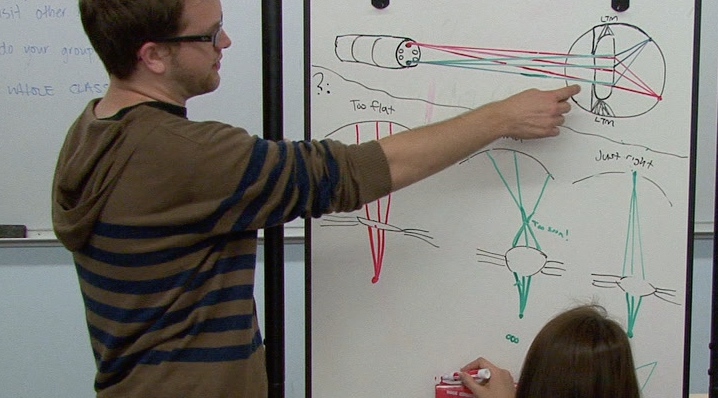
This co-teaching model brought together faculty from science education--Leslie Atkins Elliott in Physics and Irene Salter in Biology--with a faculty member from English, Kim Jaxon in Composition and Literacy. Bringing together faculty with expertise in the teaching of writing and faculty with expertise in science allowed the faculty to think carefully about developing structures of support for nascent scientists. The course, NSCI 321: Scientific Inquiry, is a science course for non-science majors, many of whom are planning a career in elementary education. The course was co-taught in six iterations, which allowed the faculty to create a suite of inquiry-based writing tasks and strategies, conduct research on how students come to write like scientists, and disseminate this research in their book, Composing Science: A Facilitator’s Guide to Writing in the Science Classroom.
Students in the course develop inquiries around light, color, and the eye, oftentimes starting with the question “is every color in the rainbow?” Student teams experiment, ask questions, trace understandings, and develop explanations for scientific ideas that borrow from a range of scientific disciplines.
Visit the Composing Science website(opens in new window) for more information.
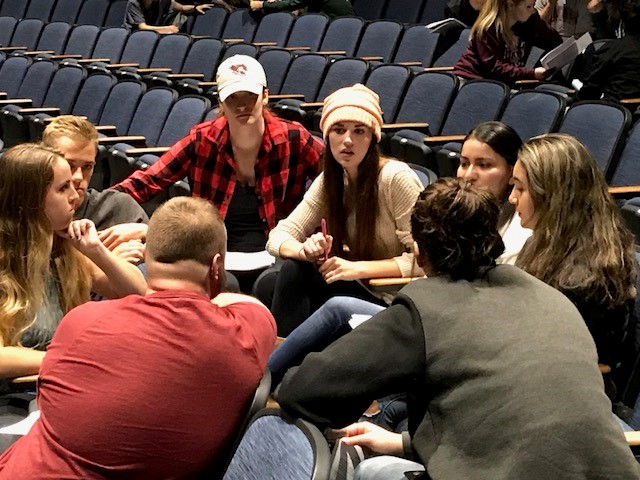
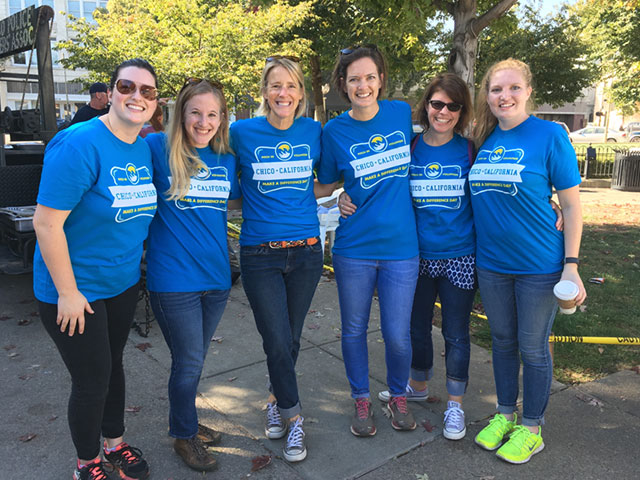
Piloted in the Fall, 2017 three faculty members--Jennifer Wilking, Political Science, Mariah Kornbluh, Psychology and Susan Roll, Social Work--linked three upper division courses to provide students an interdisciplinary learning experience with a community engagement component. Jennifer Wilking’s POLS 331 Introduction to Research Methods, Mariah Kornbluh’s PSYC 401 Community Psychology, and Susan Roll’s SWRK 485 Social Welfare Policy, Programs & Services focused their courses around the central question, how does research inform policy at the local level using the salient and timely topic of homelessness as a focal point. The classes met jointly for 14 sessions throughout the semester and were linked pedagogically using shared readings, multiple community speakers, and collaborative learning opportunities. A shared service learning assignment was to design and test a research tool to identify issues facing people experiencing homelessness as well as the concerns of people who are housed in Chico. As a part of this course all 100 students participated in the NationalMake a Difference Day event in Chico. The final joint assignment were multidisciplinary posters presented at the Political Science Research Forum at the end of the semester.
Multiple modes of evaluation were conducted with the support of two graduate research assistants. Course evaluations, surveys and focus group data suggest that students were more engaged learners and gained a deeper understanding of course material as a result of the shared learning environment. The faculty presented the course design and progress at the Chico State Center for Learning and Teaching Conference 2017 in a session entitled, Enacting the Teacher-Scholar Model through Civic Engagement. This innovative pedagogy encompasses multiple AAC&U’s LEAP High-Impact Practices including the development of learning communities, collaborative assignments and projects, undergraduate research, and civic engagement. Results of this work are currently being written-up for peer review in the Journal of Community Engagement and Scholarship.
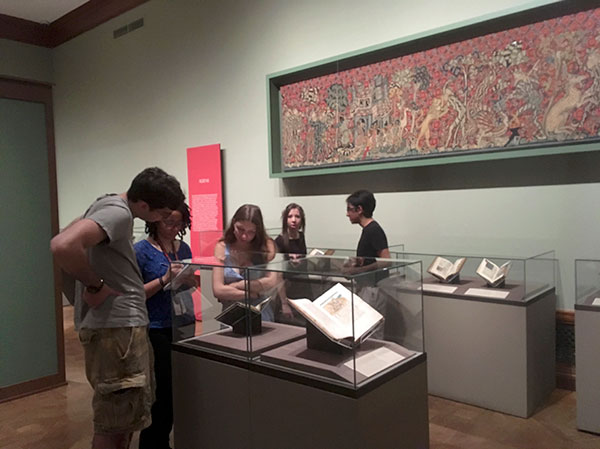
“Medieval Monsters: Terrors, Aliens, and Wonders,” taught by Asa Mittman at Chico State and co-taught with Sherry C.M. Lindquist at Western Illinois University, examined the vital role played by monsters in medieval art and culture. The word “monster” evokes powerful visions of strange and unnatural creatures. Monsters and monstrosities possess a transformative power that makes them at once profoundly dangerous and utterly fascinating. More than mere figments of the imagination, monsters have played an important role throughout the history, and were central to medieval thought. The very act of visualizing monsters—giving shape to them in art and literature—constitutes an important step toward defining and therefore controlling the unknown. During the European Middle Ages, theologians accepted the supernatural character of monsters as part of a divine plan. Medieval scholars traced the meaning of the word “monster” to the Latin verbs “monstrare” (to show) and “monere” (to warn).
The course ran in concert with our exhibit with the same title at the Morgan Library. This course offered an opportunity for collaboration among faculty and students from state and private, secular and religiously affiliated universities, academia and museums, from both coasts, the Midwest and Midsouth (NYU, Fordham, Yeshiva, WIU/University of Memphis, the Morgan Library & Museum, and CSU Chico). It brought together 8 Fordham graduate students, 1 graduate student from Yeshiva University, and 4 undergraduates from NYU, studying diverse disciplines (art history, history, literature, philosophy).
The course offered students a behind-the-scenes account of how a major, national exhibit was conceived, proposed, and installed. In addition, students collaborated on themed content relevant to objects in the exhibit, to be published on the website, and for which they will be credited. Students filled out questionnaires that were the basis for dividing into research groups according to their diverse interests, experience, and expertise. Together, they selected medieval manuscripts in the Morgan collection in dialog with their shared research interests. This was the first hands-on experience with primary source material and works of art for the majority of students. We know from discussions with them that the experience was profound and likely formative (as expressed in a blog featuring Fordham Medieval Studies MA student Melanee Baptist: https://thevenerableblog.ace.fordham.edu/blog/958).
After a month of intense, guided research, students presented their initial findings to Roger Wieck, Melvin R. Seiden Curator and Department Head of Medieval and Renaissance Manuscripts at the Morgan Library & Museum. We are encouraging students to pursue their projects beyond the class and continue to offer them support in preparing their work for presentation at scholarly conferences and for publication. We hope that some of these projects will be represented at a conference we are organizing when the exhibition travels to Cleveland in 2019.
Additionally, the students hosted students from another course taught by Professor Farzad Mahootian, “The Rise of Modernity: From Religion and Magic to Science & Technology” (NYU, Liberal Studies). They toured the exhibit with counterparts who brought different questions to the material, and which gave them an opportunity to consider the varied publics for their specialized research.
The course was featured on The Venerable Blog(opens in new window) at Fordham University. You can also find information on Asa Simon Mittman’s site(opens in new window).